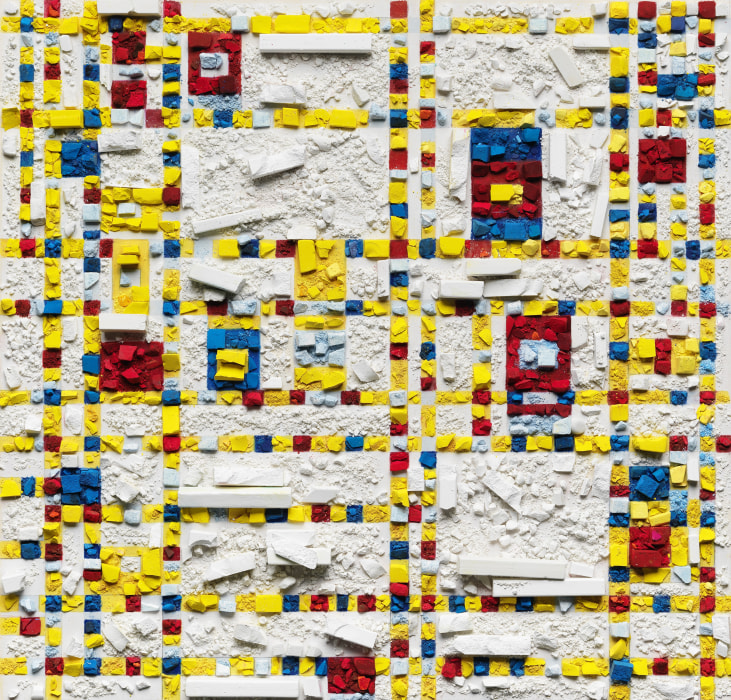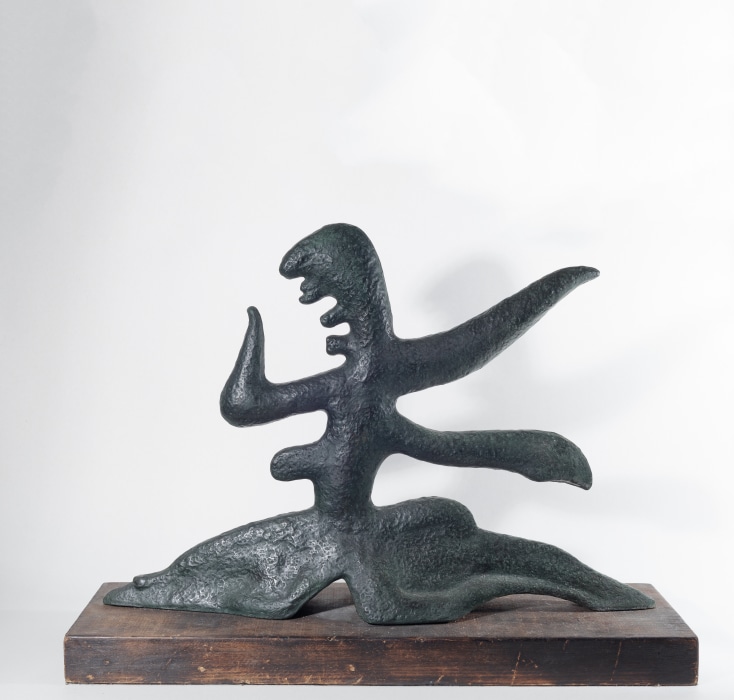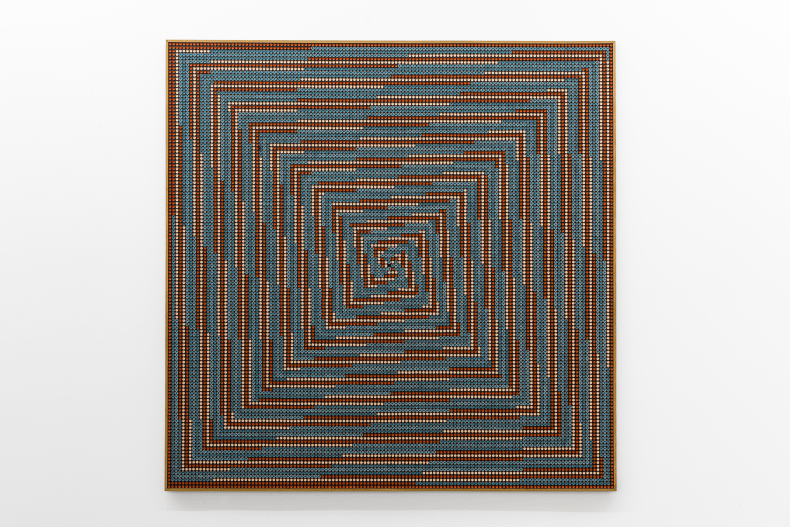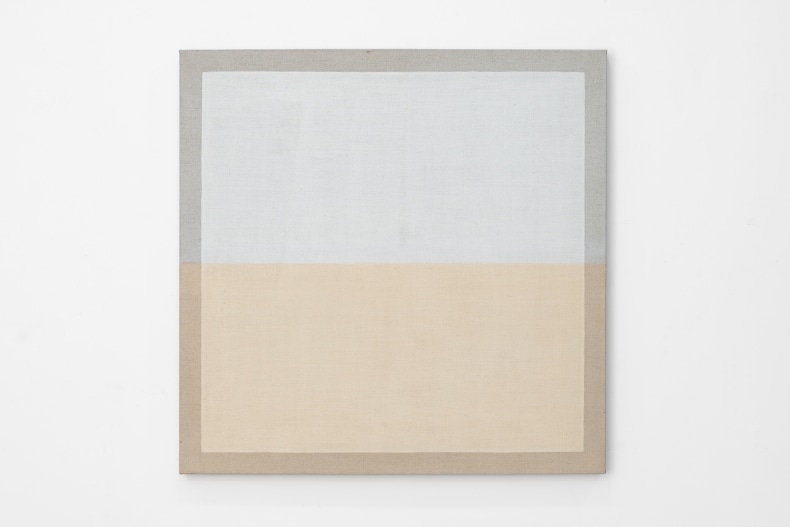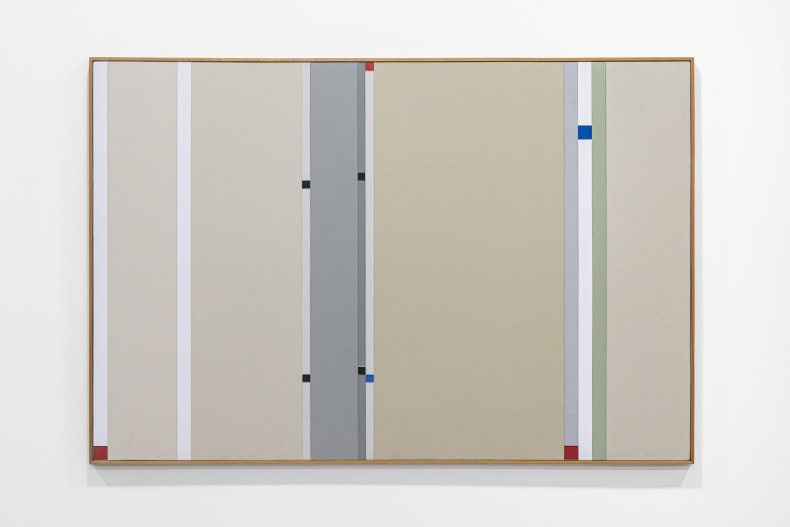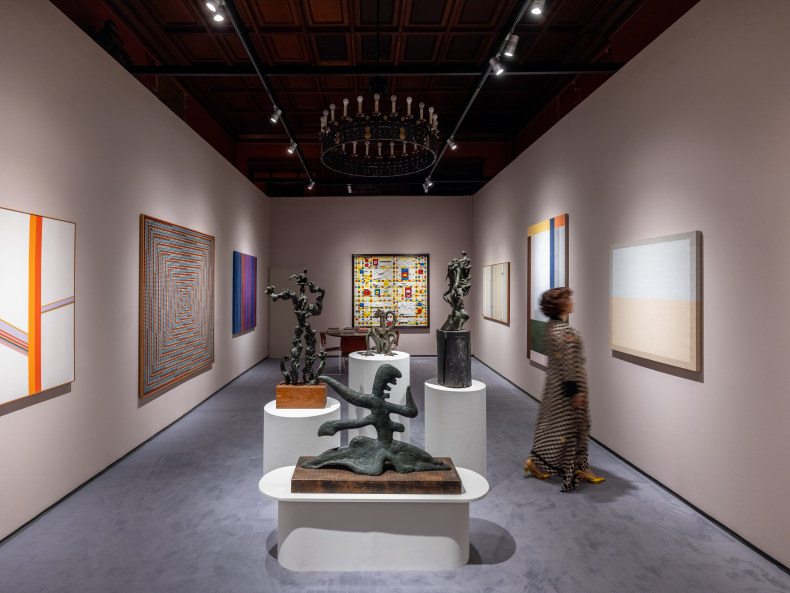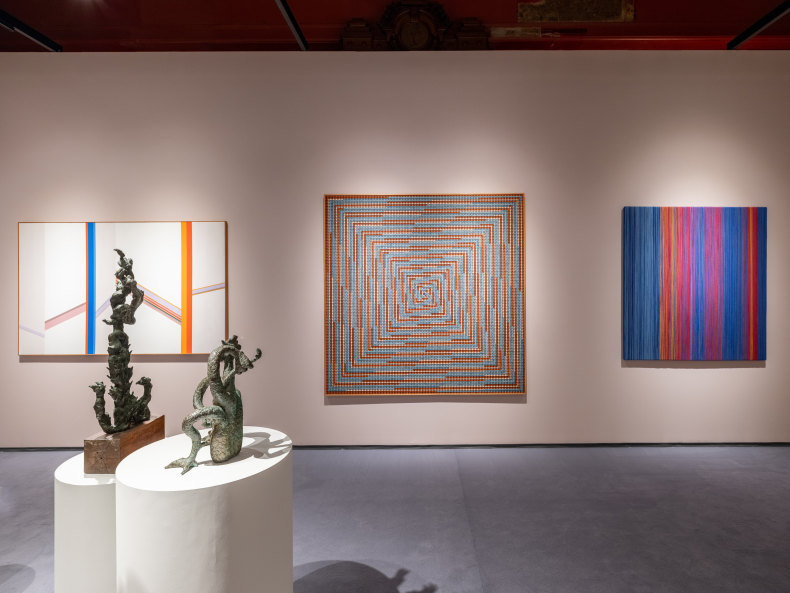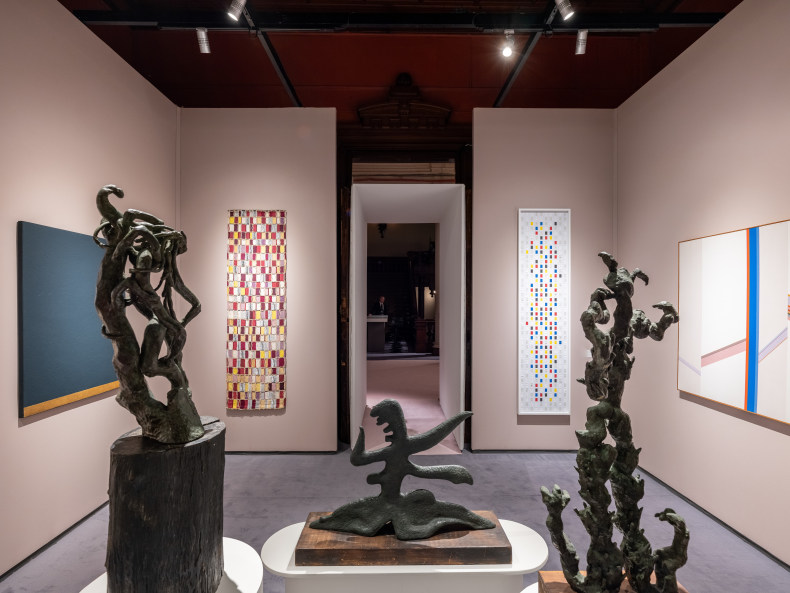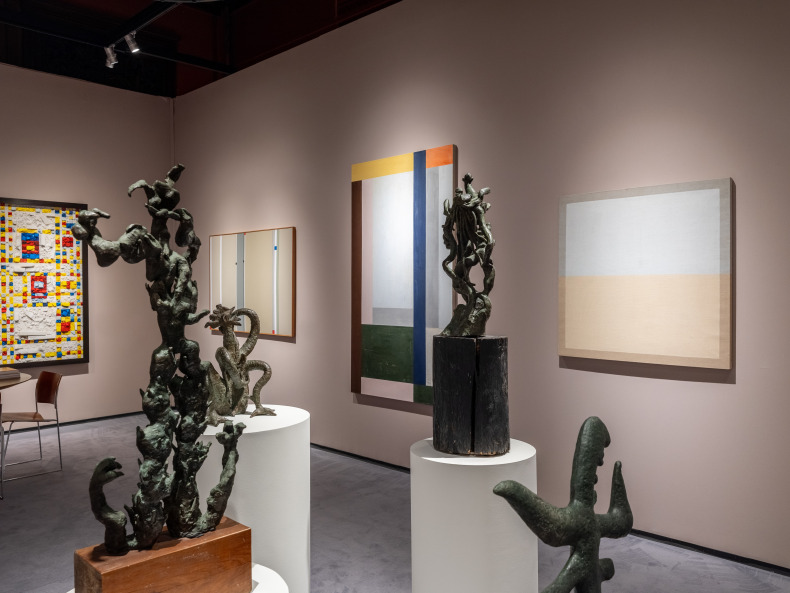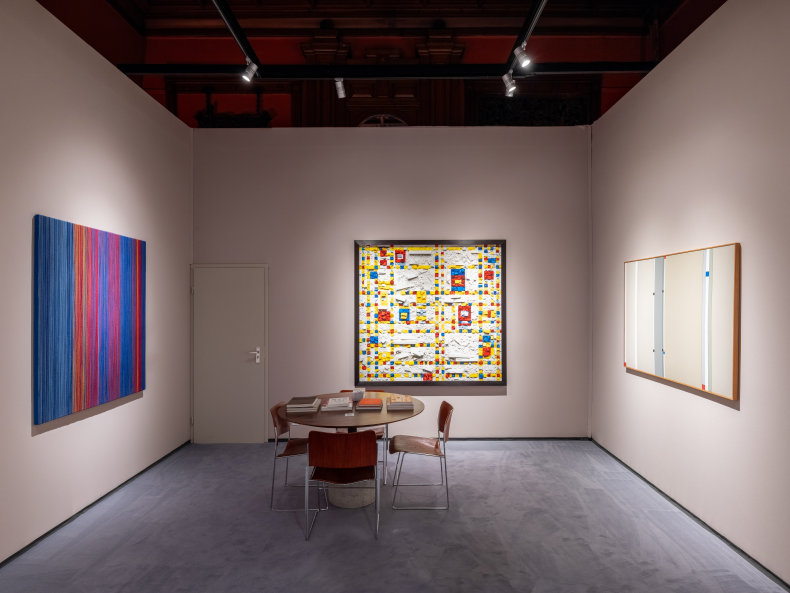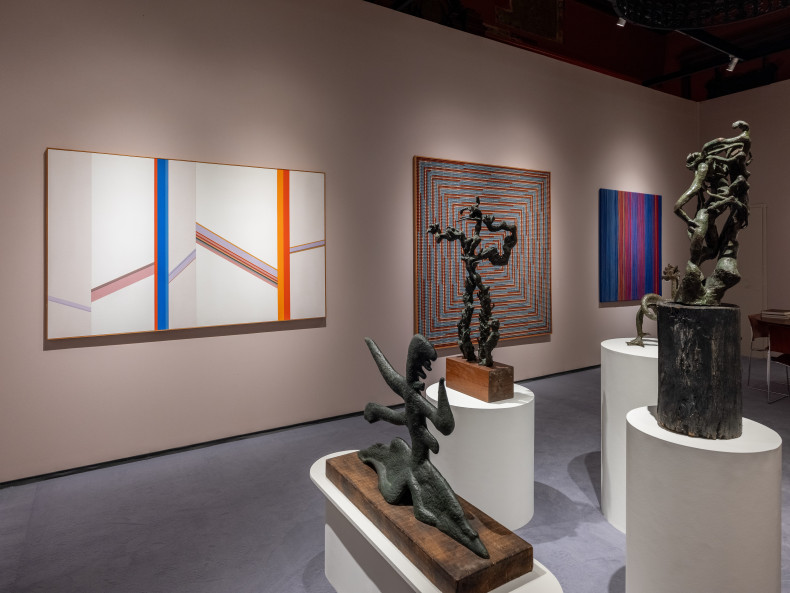Nara Roesler is pleased to present at TEFAF New York 2025 an unlikely juxtaposition of Surreal Figuration and Concrete Abstraction, summarized as Maria and Mondrian.
Maria Martins (1894–1973), the most significant Surrealist sculptor from Brazil and one of the most celebrated artists of the 20th century, developed a unique form of neo-baroque figuration that evokes ancestral and vernacular Brazilian motifs. She lived in the United States between 1938 and 1949. Between March 1943 and April 1944, the Valentine Gallery in New York hosted a show of Maria's bronze sculptures inspired by deities from the Amazon. Simultaneously, Piet Mondrian (1872-1944) —Maria’s friend—exhibited his late paintings, including the now-iconic Trafalgar Square (1939–43) and Broadway Boogie Woogie (1943).
This historic exhibition, held 80 years ago in New York, serves as the pretext for Maria and Mondrian. The presentation brings together landmark sculptures by Maria from the 1940s, alongside a selection of works that reference Mondrian’s legacy of orthogonal, grid-based geometric abstraction.
Maria Martins' exhibition at Valentine Gallery was an absolute success, with her works acquired by major collectors such as Nelson Rockefeller and museums across the United States. In contrast, Mondrian sold only one painting—Broadway Boogie Woogie—to none other than Maria Martins herself, for $800. Maria intended to donate the painting to The Museum of Modern Art (MoMA), but the institution initially rejected the gift. It was only through the mediation of Nelson Rockefeller that the museum ultimately accepted the piece as an anonymous donation. Today, Broadway Boogie Woogie is one of the most sought-after works in MoMA’s collection.
The unlikely encounter between the organic and the geometric, the Surreal and the rational, the vernacular and the international, the ancestral and the futuristic is a parable of modern art’s complexities—its multiple narratives, unpredictable trajectories, and fluctuating fortunes. While Mondrian is now universally recognized as a pillar of modern art, his work was rarely praised during his lifetime. In contrast, Maria Martins was among the most spectacularly successful artists of her era, with four solo exhibitions in New York between 1943 and 1947, alongside acquisitions by prominent museums such as MoMA, Baltimore Museum of Art, Museum of Fine Arts, Houston, Cleveland Museum of Art, Albright-Knox Art Gallery, Pasadena Art Museum, and San Francisco Museum of Art. Despite her remarkable legacy, Maria’s contributions have been unjustly overlooked in recent art history.
For Maria and Mondrian: The Unexpected Encounter of the Surreal and the Concrete, Nara Roesler brings together a group of unique, landmark sculptures by Maria Martins from her Amazonian period alongside works by artists whose practices engage with the foundational elements of abstraction tied to Mondrian's legacy. The exhibition features Vik Muniz’s version of Broadway Boogie Woogie, alongside works by Abraham Palatnik, Amelia Toledo, Sheila Hicks, María Eugenia Dávila and Eduardo Portillo, Mira Schendel, José Patricio, Fabio Miguez, Julio Le Parc and Marco Maggi —representing a lineage of abstraction from the 1950s to the present day.
